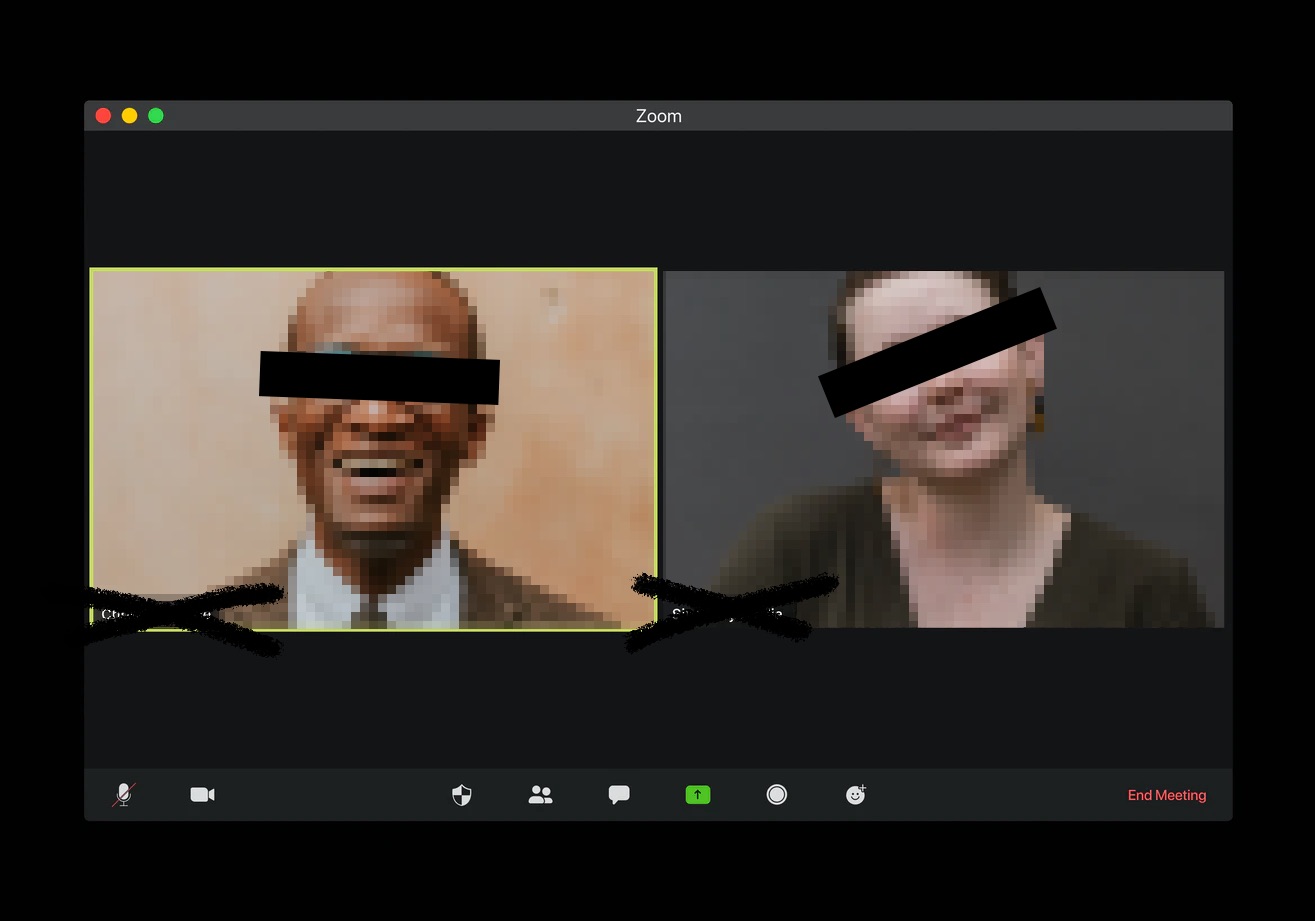Censorship fears and vampire hours: Chinese international students, Zoom, and remote learning
Three Emory University researchers recently conducted a survey — interviewing more than 20 Chinese international students and instructors — to learn about the unique challenges and concerns of Chinese students studying in the U.S. during COVID-19.

It was the last day of class in a course about Chinese society at Emory University — by then, many Chinese international students had already returned home after the transition to online learning in mid-March. Students in the class, 85% of whom were from China, logged on via Zoom, excited to see their classmates and instructors one last time before the semester ended. But when the discussion turned to Chinese politics, the faces of some Chinese students were suddenly replaced by rows of blank avatars, pseudonyms, ceiling fans, and unidentifiable objects.
“I was concerned about discussing sensitive topics in China, since the data [transmitted] through local VPN was under possible scrutiny,” a student in the class later wrote.
This story spotlights one of many challenges faced by international Chinese students while attending classes in the United States remotely. Hoping to better understand these challenges and identify solutions in the event of a remote fall semester, we contacted Chinese students and professors about their experiences. Their answers offer a glimpse into the extraordinary situations that some Chinese students discovered themselves in, and hint at the wider ramifications of any decision universities make for the academic year of 2020–2021.
Stay in the U.S. or go back to China?
After campus closures, the primary challenge for Chinese students was the prospect of returning home. At Emory University, some students attempted to return home, whereas others chose to stay in the United States to avoid issues such as time change and poor internet connectivity. Students who returned to China needed to manage frequent flight cancellations and undergo a 14-day quarantine period in a Chinese hotel. Experiences in these hotels were mixed, and multiple Chinese students and their instructors emphasized the poor and unstable internet connections.
Some Chinese students also considered their homes unsuited to online learning, including one student from Beijing who described her childhood room as more of a “storage room” than a setting for intense study. The adjustment to a 12-hour time difference presented additional difficulties. The same student from Beijing told us that she had to modify her sleep schedule: “Most of my assignments are due [Beijing] time at 6 a.m. or 12 p.m.…so I’ve pushed my bedtimes further and further down the road to a point that I’m living in [Atlanta] time again.” Time change also made attending synchronous classes highly inconvenient.
While Chinese students contended with these unique challenges, they also reported experiences shared by many college students during the pandemic regardless of their domestic or international status, such as difficulty focusing on coursework. One student wrote that “studying alone demotivates me,” while other students expressed difficulty with “self-discipline.” One computer science student explained, “I found myself watching Netflix most of the time,” while another wrote, “Taking classes via Zoom can mean staring at people’s faces for an hour, it’s very easy to tune out.” The university experience — in its educational, collegial, and social respects — was dramatically altered.
Privacy concerns and “sensitive” content
In recent months, concerns have spread that Zoom does not adequately protect the privacy of its sessions and users. A problem rather unique to Chinese students, potential government surveillance worried some of the students we contacted. Some students believe the authorities might be listening to synchronous classes. Asked about university courses that discuss sensitive political topics in China, one sociology student who returned to Beijing told us that she was uneasy when a professor played a song forbidden in the mainland. She said that potential surveillance “haunts [her]…a bit,” and that she thought during the song, “Wow, my neighbors may choose to report me on this.”
Similarly, another sociology student who decided to remain in the United States explained that her family in China lives in a military compound, where it is impossible to access a VPN and the situation “is too sensitive to discuss anything related to politics… That’s one of the reasons why I chose not to go back home.”
Concerns about privacy are well warranted, as The Intercept reported that key vulnerabilities may exist that could allow government entities to surveil Zoom calls. This past week, Zoom came under fire for closing accounts of activists holding events related to the 1989 Tiananmen Square Massacre and Hong Kong independence. These account closures were at the request of the Chinese government, and raised particular concern among Chinese studies faculty about the safety of their course content for Chinese students learning remotely.
Although Zoom has taken steps toward better privacy protections and will no longer allow Chinese government requests to impact users outside of the P.R.C., concerns for Chinese students remain.
Zoom continues to route data from local users through China-based data centers, and Zoom stated in a recent blog post that the company is “developing technology over the next several days that will enable us to remove or block at the participant level based on geography.” According to Zoom, this would allow the company “to comply with requests from local authorities when they determine activity on our platform is illegal within their borders.” As a result, classes discussing sensitive subjects in China can still be subject to surveillance and censorship.
Despite actions taken by Zoom to assuage these concerns, professors noted that Chinese students still became more reluctant to discuss social and political issues during synchronous sessions. One student told us about his hesitance “after the news reported that Zoom has sent data to its servers in China,” and that Zoom had been “criticized for its poor encryption standards and security flaws.”
How to teach remotely
Faculty members we contacted were keenly aware of the challenges Chinese students faced, and they spoke to us about modifications to their courses.
An assistant professor of Korean explained to us, “I am concerned that many of the social and political issues discussed in my classes might be sensitive issues in China,” adding, “I would have to be more cautious about any topics, discussions, or materials I would include in the class.” A professor of Russian wrote, “There are special challenges teaching about Communist cultures, but the emphasis on countries with parallels like Russia is a way to navigate politically sensitive comparisons.” Two professors who co-taught a class on modern Chinese society also recommended that students download materials before departing for China.
Dr. Yawei Liu, an adjunct professor of political science, noted that students’ concerns should be recognized by educators, as an environment of fear is not conducive to learning. However, Dr. Liu warned against self-censorship: “I would not change the content of my classes… Steps should be taken to make students feel more comfortable, but to self-censor would hurt the integrity of the class and the education of students.”
Professors also sought to help students cope with time change. Some professors allowed students to watch synchronous class recordings at a later time, while others held separate meetings sessions for students in Asia. Mizuki Mazzotta, a lecturer of Japanese, explained, “I made my Japanese 102 course mainly asynchronous so that none of my Chinese students have to stay up very late, or miss out on the learning opportunities that others have.” Bumyong Choi, a senior lecturer of Korean, told us that, while his class started at 9 a.m. and was therefore “manageable” for students from East Asian countries, other Korean classes that started in the afternoon “did not fit the international students’ daily schedule.”
Professors also adjusted their curriculum and expectations to accommodate students who didn’t have access to high-speed internet. Seth Goss, an assistant professor of Japanese, remarked in his message to us, “Students completed all assignments using [the learning management platform] Canvas and I made the deadlines more flexible than I normally would.”
Despite these challenges, one German studies faculty member praised his Chinese students for their resilience, stating, “All the Chinese international students in my classes were eager to keep up with the class and indicated no issues with the new format.”
What next?
COVID-19 has forced questions about the value and academic rigor of online learning, with lawsuits already underway against a number of universities, including Emory University. As universities across the U.S. look toward full and partial campus closures and continued remote learning in the fall, administrators and instructors realize that they must address the unique challenges confronting international students.
As we have emphasized, there exist concerns among Chinese students, such as with regards to censorship and surveillance, that require faculty and staff to develop innovative and flexible strategies. Universities will need to determine if all students can use VPNs, for instance — as one Emory professor noted, “I would think the most important aid for Chinese international students for remote education would be access to a stable VPN and flexibility with scheduling.”
While these strategies can ease such concerns, some students might still decide that online learning is not the right solution for them. The normal campus experience creates personal connections between people of different backgrounds, and many U.S. campuses are multicultural and multilingual spaces that allow students, staff, and faculty to cross national borders as they conduct research, attend classes, manage student services, and participate in social activities.
Students we spoke with overwhelmingly expressed the desire to return to campus in the fall, if circumstances permit, and others were hesitant about returning to China this summer for fear of not being allowed back to the United States. One computer science major explained to us, “If the university is still going online next semester, personally, I would like to take a year off. However, returning students need to reapply for visas once they declare a leave of absence.”
Now that Emory University and other institutions have decided to offer a mix of online and in-person classes, it remains to be seen how many Chinese students will choose to return to campus or continue online learning. COVID-19 has disrupted the education of students worldwide, and for international students at U.S. universities, the prospect of continued online learning seems particularly daunting. We may now need to reconceive not only education abroad for American students, but also the experience of international students at American institutions of higher education.








